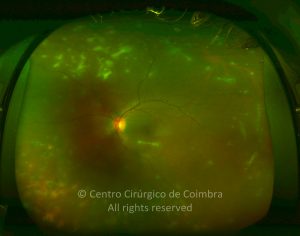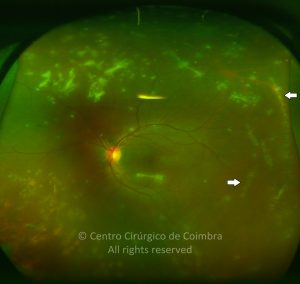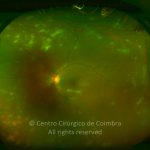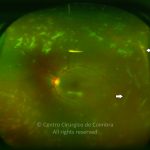Diffuse unilateral subacute neuroretinitis (DUSN) is a rare condition that occurs in healthy patients, mainly in children and young adults and is due to the presence of a subretinal nematode: Baylisascaris procyonis, Ancylostoma caninum, and others. Clinical findings include unilateral, indolent, diffuse pigmentary changes with gray-yellow outer retinal lesions that reflect the movement of the subretinal nematode.
The local inflammatory changes may be related to toxic effects or immunologic stimulation from excretory products of the larva or from release of unknown soluble tissue toxins.
In the acute phase, patients often present with decreased visual acuity, vitritis, papillitis, and crops of outer retinal lesions. Later in the course of the disease, slowly progressive RPE changes and optic atrophy may be observed, as well as narrowing of the retinal vessels.
After the worm is killed, visual acuity loss usually does not progress.
Differential Diagnosis:
- Papilledema
- Toxoplasmosis
- Presumed ocular histoplasmosis syndrome
- Multiple evanescent white dot syndrome
- Sarcoidosis









